Parts of the Plant
What are the most important parts of the cannabis plant, and what are their functions? In this chapter, we educate consumers on the most important parts of the plant and their functions.
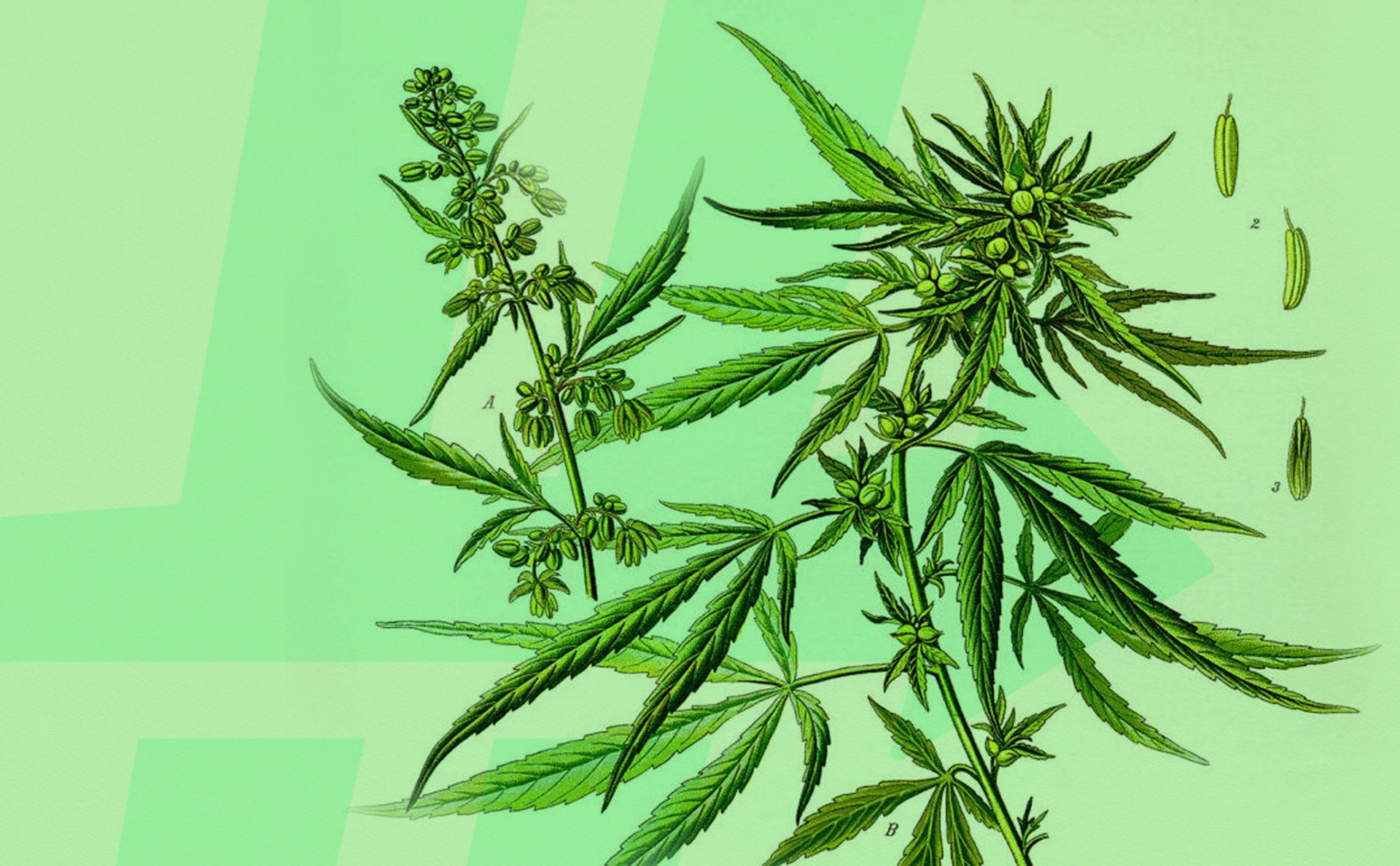
Cannabis is one of the most unique and dynamic plants on the planet. Each part of the plant has its role to play. Knowing the functions of each part can improve your consumption experience and your overall appreciation of it. In this chapter, we describe the most important parts of the plant and their functions.
Roots
As is the case with most horticulture, the roots are the lifeblood of cannabis plants. Growing strong, healthy plant roots is essential for the success of any cultivation operation. Roots deliver water and oxygen to the rest of the plant. Roots extend downward from the plant’s main stem into your growing medium.
Stem or Stalk
Growing up from the root system of the cannabis plant, stems or stalks support the rest of the plant, including the leaves and flowers. Stalks must be strong and durable to hold up the weight of cannabis flower.
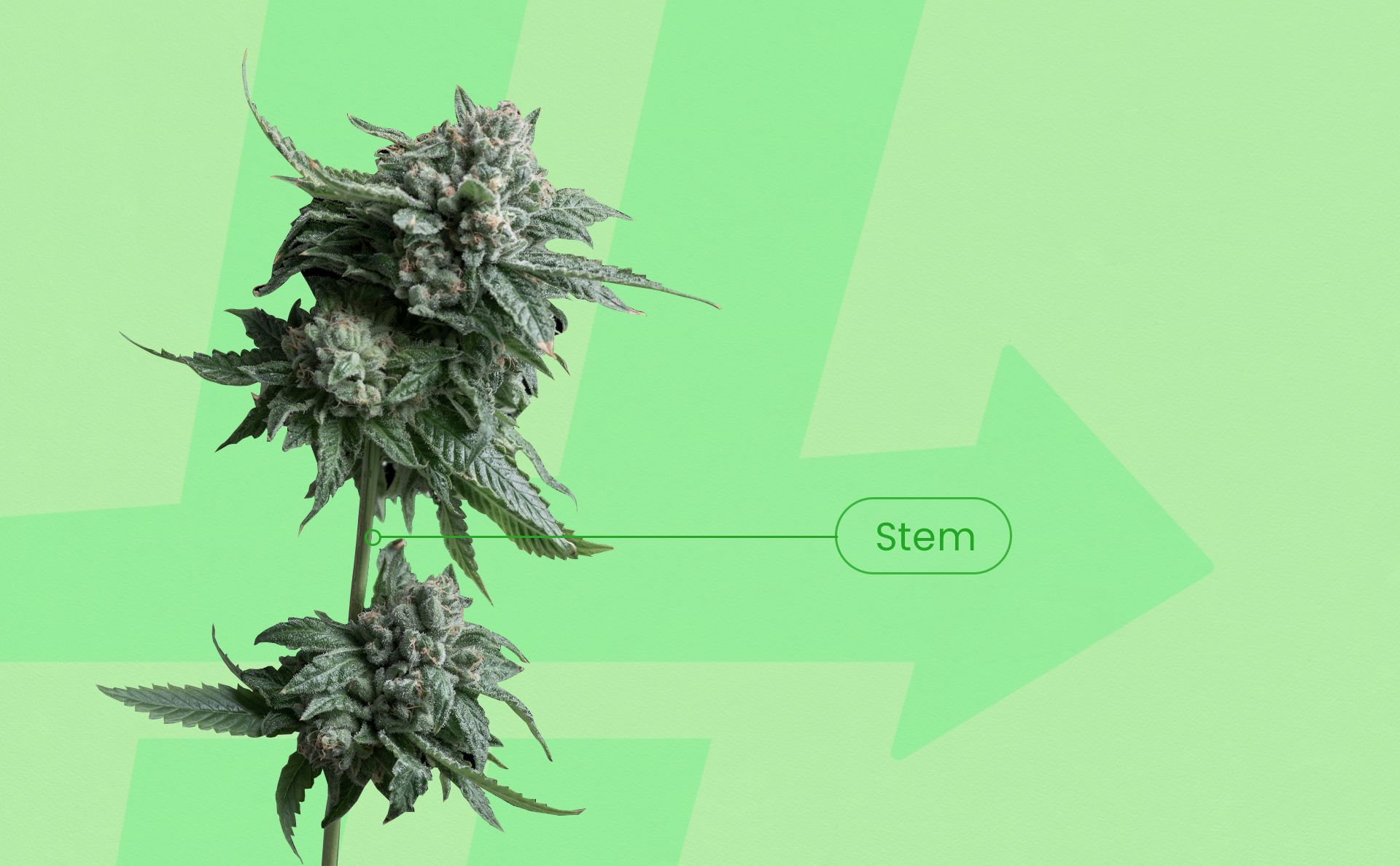
To achieve this, experienced indoor home cultivators and commercial grows often use fans on every wall for air circulation and stalk rigidity. As such, the increased airflow builds the plant’s ‘muscle’ to ensure its long-term health.
In addition to strengthening the stalk, installing fans in cultivation rooms can help to avoid microclimates. Think of this as evenly cooking your food rather than overcooking one part while the rest is somewhat cold.
Branches
Branches grow outward from the main stalk of the cannabis plant to support the leaves and eventually the flower. Branches are also often cut at strategic places by cultivators, which will train branches to create more sites for flowers to develop.
Nodes
A node is a point where a branch grows off of the main stem of the cannabis plant, and where the stem and leaves intersect. When these branch-to-branch nodes form, leaves and flowers can grow on some of them, but not all of them.
Called pre-flower, the initial development of the sex organs of cannabis plants appear at the nodes and act as an indicator that you’re growing females. The space between nodes is called internodal spacing and will indicate the height of your plants.
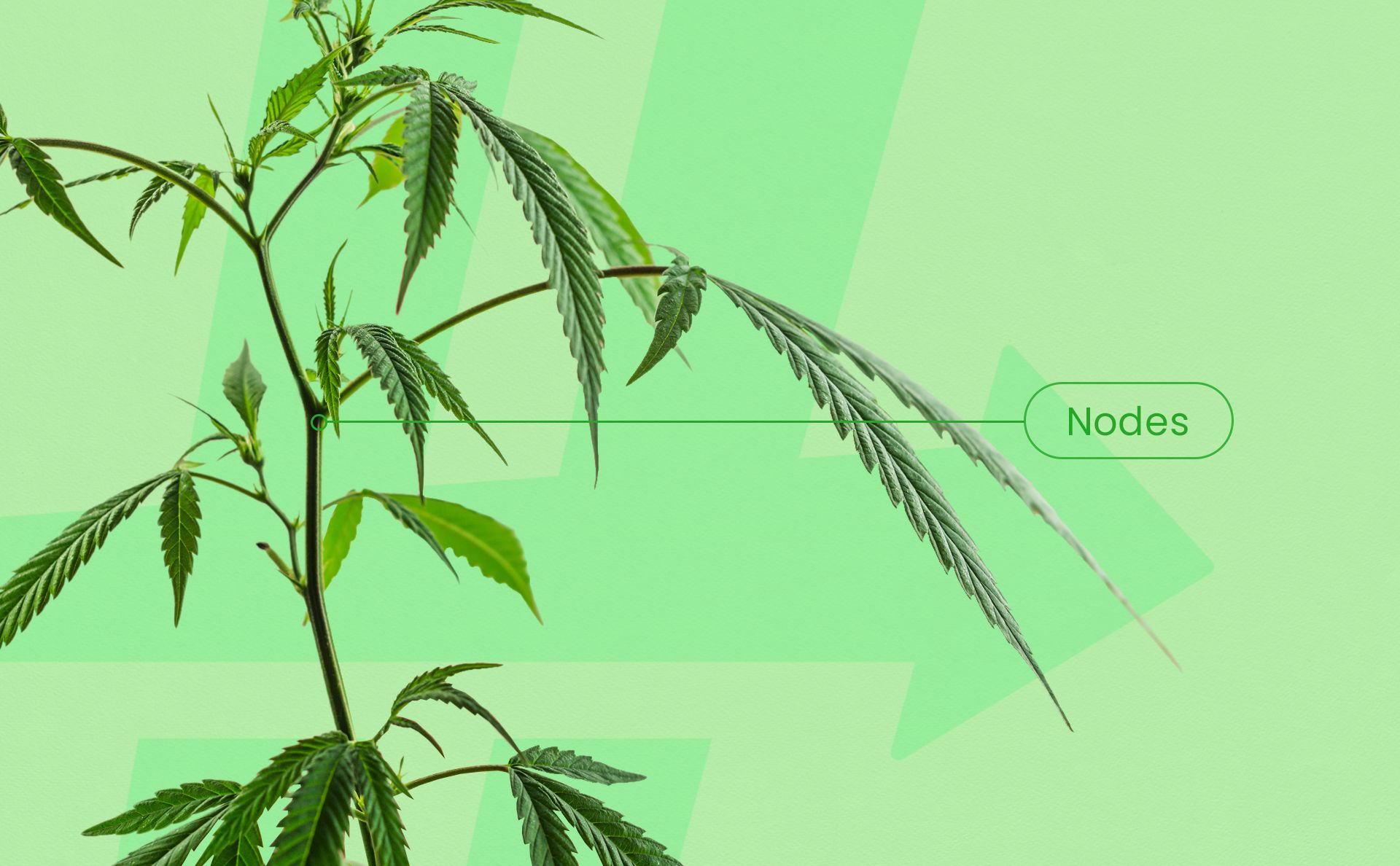
The larger the internodal spacing, the taller the plants. A good grower will try to minimize that space. The idea is to grow shorter/stocky plants (unless you are outdoors).
After 4-6 nodes form, cultivators will cut off, or top the stem of the plant. This causes the plant to grow outwardly, which creates more sites for flowers to develop.
Fan Leaves
Apart from the roots and stem, fan leaves are among the first parts of the plant to develop in its vegetative state. Fan leaves are your stereotypical cannabis leaves that most people would recognize instantly.

As the plant focuses its energy on developing buds in the flowering stage, fan leaves naturally turn a yellowish color and fall off. This is entirely normal and nothing to worry about, as growers can just trim dead ones with no harm done to the plant.
However, do not throw away your fan leaves, especially if you are only growing a few plants! They have some benefits, like creating rich compost.
Raw cannabis leaves may be high in nutrients and minerals like iron and folate, and Vitamins C and K. This fibrous plant matter may be high in antioxidants as well, and many consumers add raw leaves to their smoothies or juice blends. Raw hemp seeds may also be high in omega-3 fatty acids as well.
Sugar Leaves
Sugar leaves look similar to their fan leaves counterparts, but are much more densely packed. This is because sugar leaves develop mainly during flowering, and are covered in trichomes. This brings us to arguably the most important part of the cannabis plant: trichomes.
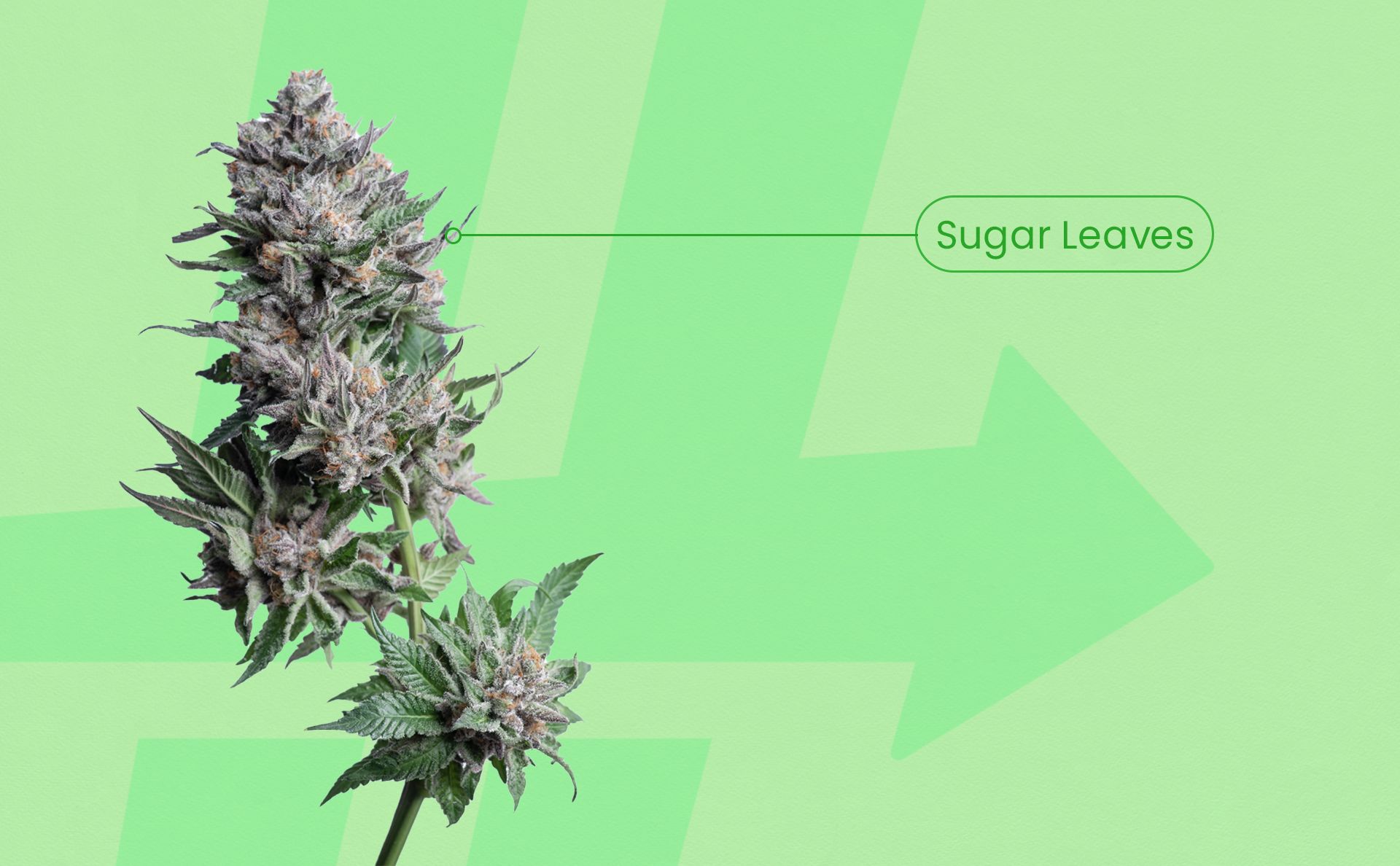
Trichomes
Trichomes are crystal-like resinous glands that form on cannabis flowers. These glands contain all the essential compounds in cannabis, like cannabinoids and terpenes. For more information on trichomes, be sure to read our chapter on them.
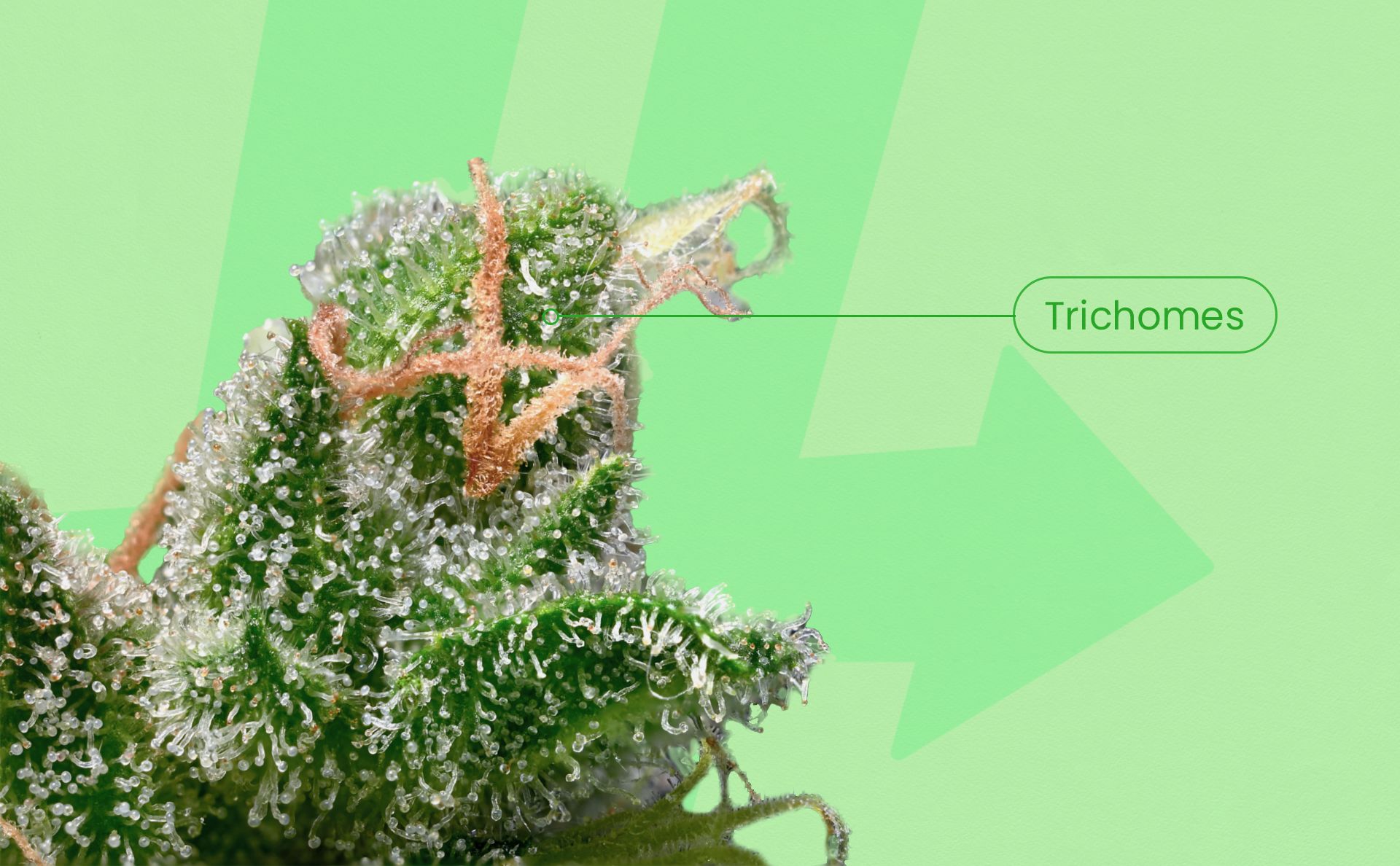
Cola
The cola of the cannabis plant is also called the bud site. This is where clusters of flowers are densely packed together while growing. Colas continue extending upward as the plant grows. Smaller colas form on lower branches. The main cola is sometimes referred to as the apical bud, and forms at the top of the plant.
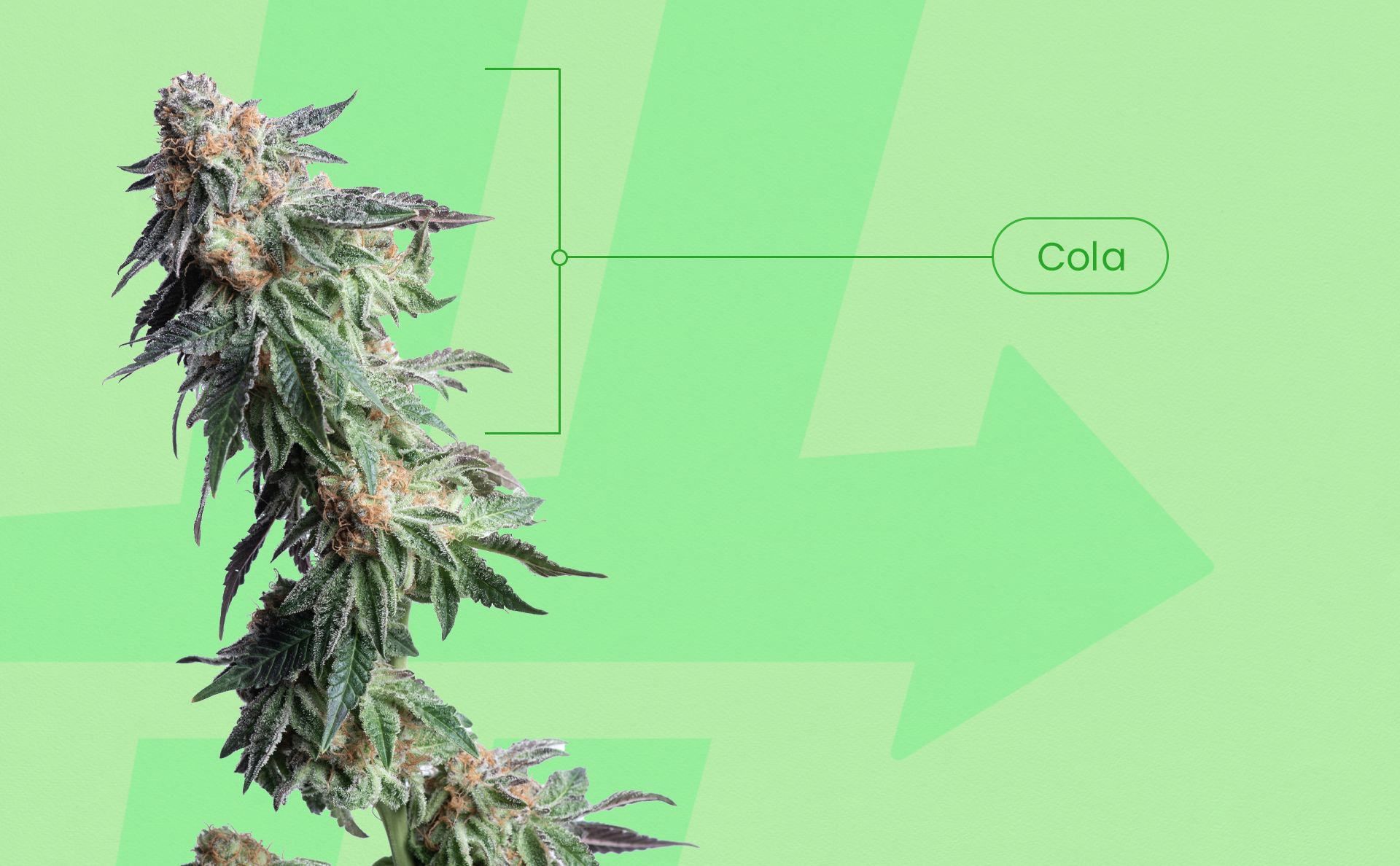
Calyx and Bract
Bracts are tear-shaped parts of the plant that contain some of the reproductive organs of females. These bracts are heavily concentrated with resin glands that contain some of the most cannabinoids (like THC) than any other part of the plant.
Pronounced ‘kay-lix’, calyxes are not able to be seen by the naked eye. Calyxes enclose the bracts of the cannabis plant in a translucent layer over the base of a flower.
Stigma and Pistil
The pistil contains the female reproductive parts, including the stigma. Stigmas are thin hairs that grab onto male pollen. Stigmas are thin, vibrant, and colorful strands that grab onto pollen and change color as the plant matures.
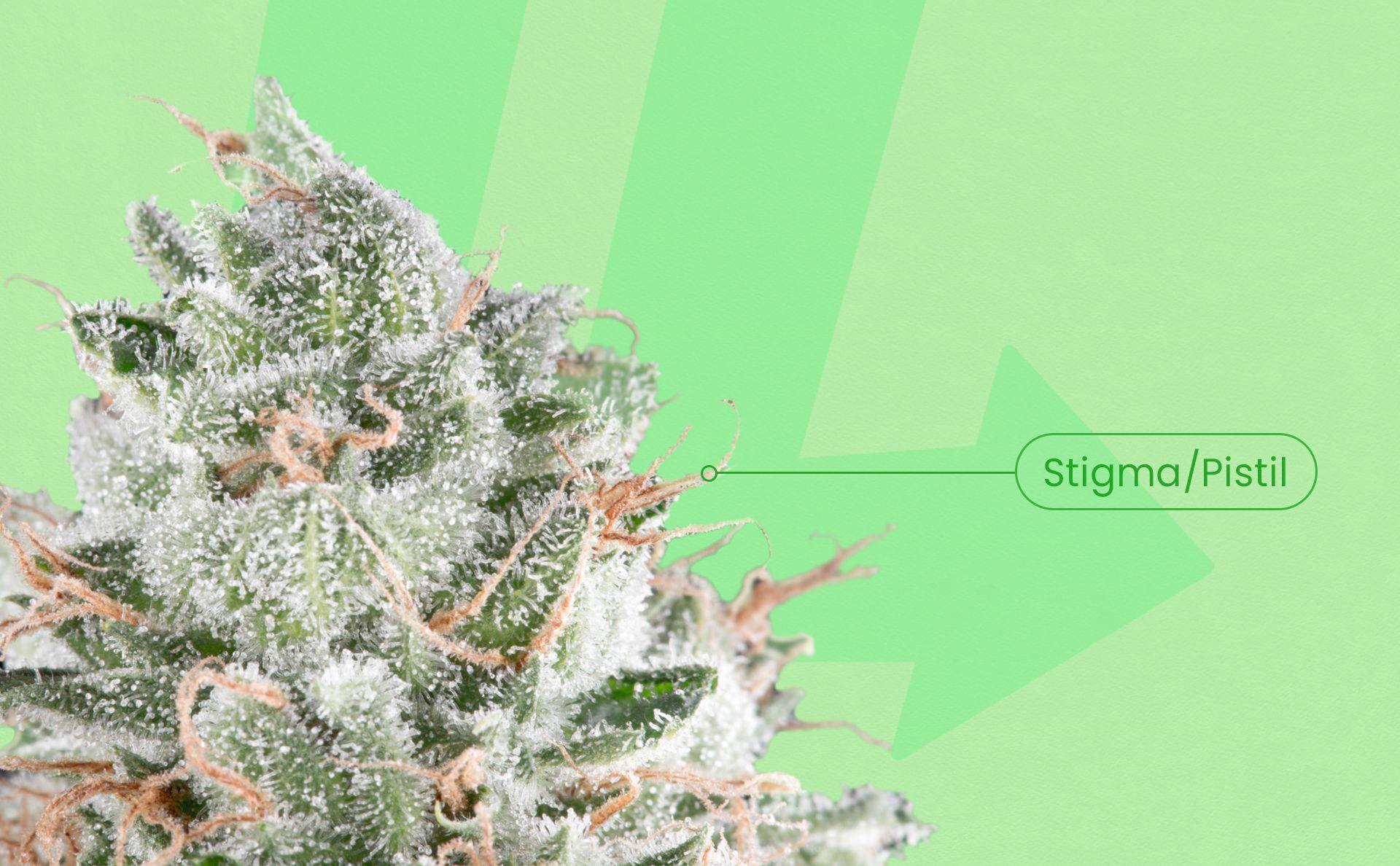
Stigmas turn amber or brownish red when flowers are maturing, and are ‘ripe’ or nearing harvest. Stigmas are crucial for plant reproduction but contribute next to nothing toward the potency and taste of cannabis flower.
What We Learned: Parts of the Plant
Many parts make up the cannabis plant. Now that you have gotten to better understand them, you will gain an appreciation for this dynamic plant and can help to enhance your consumption experience. Here’s what we learned in this chapter:
- Trichomes are arguably the most important part of the cannabis plant, containing cannabinoids and terpenes.
- Sugar leaves and fan leaves look similar, but sugar leaves are densely packed with trichomes.
- Clusters of densely-packed flowers that develop together while the plant is growing are called colas.
- A node is a point where a branch grows off of the main stem of the cannabis plant, and where the stem and leaves intersect.
- Stigmas are important to the reproduction of cannabis plants but don’t contribute to its potency or flavor.
- Bracts are heavily concentrated with resin glands that contain some of the most cannabinoids than any other part of the plant.
Now that you've learned the essentials about all of the Parts of the Cannabis Plant, it's time to discuss the most important one. Answer the question below and let's dive deeper into Trichomes.
Citations
- RX Green Technologies: Technical Papershttps://www.rxgreentechnologies.com/knowledge/technical-papers/
- National Library of Medicine: Cannabis, A Complex Planthttps://www.ncbi.nlm.nih.gov/pmc/articles/PMC3736954/
- Marijuana Times: The Benefits of Eating Raw Cannabishttps://www.marijuanatimes.org/what-are-the-benefits-of-eating-raw-cannabis/
- Healthways: Therapeutic Hemp Oil and Seedshttp://www.healthyways.co.za/wp-content/uploads/2015/07/Therapeutic-Hemp-Oil.pdf
Test your knowledge, track your progress and earn your badge.
Which leaves are densely packed with trichomes?